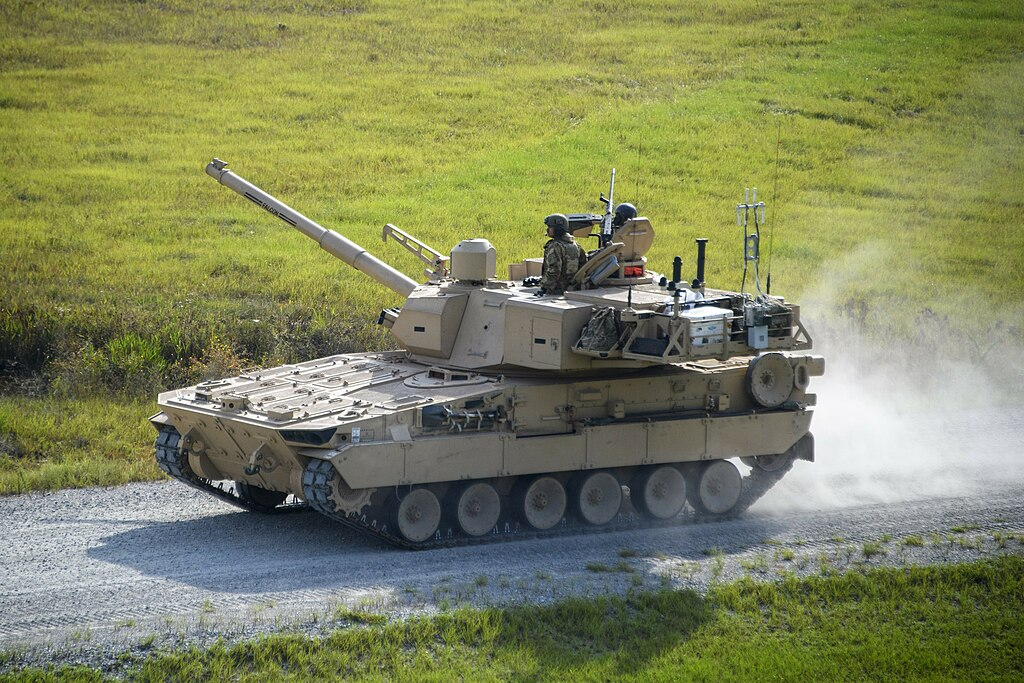
The M10 Booker began with grand ambitions—to outfit the U.S. Army’s light infantry with a quick, armored vehicle that could pack a heavy punch without sacrificing mobility. But it instead became an object lesson in how contemporary military acquisition can get sidetracked.

A Decades-Long Capability Gap
The Army’s Infantry Brigade Combat Teams (IBCTs) had for decades been without a purpose-built vehicle that could offer mobile, protected, direct firepower. This left troops weak in the face of fortified positions or enemy light armor. Enter the Mobile Protected Firepower (MPF) program—an effort launched in earnest back in 2017 to fill that tactical void. The goal was to craft a vehicle that could be rapidly deployed, survive on modern battlefields, and provide support to ground forces in places where heavier tanks could not easily go.

General Dynamics Land Systems (GDLS) and BAE Systems were originally contracted to take their concepts and build a prototype. Following extensive testing, GDLS came out on top in 2022 by earning a $1.14 billion contract to produce what would eventually be termed the M10 Booker.

What the M10 Booker Was Supposed to Be
Walking the tightrope between an assault gun and a tank, the Booker M10 boasted a 105mm main gun, four crewmen, and cutting-edge battlefield technology such as thermal imaging and digital communications. Weighing about 42 tons, it was heavier than intended but still a far cry from the weight of an M1 Abrams. Its active protection system and modular armor were designed to keep it alive in combat environments, while its firepower provided covering fire for troops on foot.

The Army shied from calling it a “tank” and instead defined it as a combat vehicle designed to destroy enemy positions and light armor, rather than fight tank-on-tank battles.

Ambitious Plans, Tangled Execution
The Army had planned to have four battalions of Bookers in the field by 2030, with a total of 504 vehicles. The early production units were about $12.8 million each, and economies of scale were expected to bring the price down eventually. Units were scheduled to begin receiving the vehicles in 2025, with 14 Bookers per IBCT, delivered through division-level support.

Production was farmed out over a number of states: turrets made in Ohio, hulls in Michigan, assembly in Alabama. Through mid-2025, 84 had been on order, 26 had been delivered, and close to 80 had been constructed.

When Good Ideas Get Complicated
The demise of the M10 Booker can be traced partially to changing needs. As the Army insisted on greater survivability, the weight of the vehicle crept higher. What was initially a fairly lightweight, air-mobile design grew too heavy for critical infrastructure, most notably, bridges at Fort Campbell, where the 101st Airborne Division is stationed. Its weight further implied that only one could be loaded onto a C-17 transport plane at a time, restricting the rapid-deployment capability that was at the heart of the initial vision.

Maintenance was yet another sticking point. Contract restrictions on field-level repairs prevented Army mechanics from doing too much themselves, sending more maintenance back to contractors. This was a worry about the Booker’s suitability for rapid-paced or distant operations.

Pulling the Plug
Although promising huge investment and progress toward full-rate production, the Army cancelled the M10 Booker program in June 2025. As part of a broader initiative under the Army Transformation Initiative to reduce outdated and inefficient programs, leadership had no choice but to face the cold, hard fact: this project no longer met strategic needs or realities.

A break from past practice, in which the military would have probably pushed forward with a flawed platform, officials here this time admitted, “We got it wrong.” Budget pressures, evolving international priorities, and consideration for future-readiness all factored into the decision.

What Comes Next
Though the M10 Booker won’t be used extensively, its production provides obvious lessons. First among them: balancing mobility, protection, and firepower in one vehicle is still a formidable design and engineering challenge. Efforts to do so usually accompany bitter trade-offs.

Nevertheless, the operational requirement that brought the Booker into being has not diminished. Light infantry troops still do not have a deployable, armored fire support capability. Whether the Army returns to the idea with emerging technologies or seeks alternative solutions entirely, the history of the Booker will guide those decisions for decades to come.
More related images you may be interested in:


